Back in December I wrote that I did not want Michael Bromwich messing with my next iPhone. My concern being that U.S. District Court Judge Denise Cote had appointed her long-time friend Michael Bromwich to serve as an external monitor for Apple’s antitrust compliance with her order finding that Apple had conspired to violate the federal antitrust law with their eBook business. Apple is appealing this full decision, but they particularly objected because Bromwich was demanding access to any and all Apple’s officers and directors (like board member Al Gore and lead designer Jony Ive) while billing Apple $1,100 an hour (the highest fee Bromwich has ever charged anyone for monitoring anything), racking up almost $140,000 within weeks of his appointment. Apple felt Bromwich was interfering with their business operations.
Indeed, Apple is being hammered by Judge Cote, for a civil antitrust violation. It seems a heavier hand than many corporations experience when they have violated federal criminal statutes. After failing to get Judge Cote to reign in Bromwich, Apple then sought an emergency stay of his “monitoring” activity on January 17, 2014, from the U.S. Court of Appeals for the Second Circuit.
On February 10, 2014, a three-judge panel of Second Circuit judges (Leval, Calabresi, and Lynch) denied Apple’s emergency motion. But the press accounts were sufficiently confused, that I was not clear exactly what had happened. From some accounts, it appeared it was not a flat-out denial of Apple’s request, so I headed back to the case’s docket for a look. Actually, while Apple was not able to remove Bromwich, they did constrain him considerably.
A Bit of Background and a Possible Prognosis
Obama’s Justice Department and thirty-three states and U.S. territories (“Plaintiffs”) filed antitrust lawsuits on April 11, 2012, alleging that Apple and five book-publishing companies conspired to raise, fix, and stabilize the retail price for newly-released and bestselling trade e-books in violation of the federal civil antitrust statute, the Sherman Act. The publishers settled. Apple went to trial. Judge Cote, who announced even before the trial that she thought Apple had violated the law, conducted a three-week bench trial, finding Apple liable and entering a judgment and a permanent injunction against Apple. (Currently, the thirty-three other plaintiffs are busy salivating over the millions that they hope to collect from Apple, ironically led by states like Alabama, Tennessee, and Texas which claim that they are truly business-friendly places, but obviously only if the business resides in the state.)
Apple filed a notice of its appeal of Judge Cote’s judgment and injunction and believes that it “has exceedingly strong arguments on appeal from the underlying decision.” The thrust of Apple’s appeal will be to show that Judge Cote’s ruling contradicts the U.S. Supreme Court’s modern antitrust jurisprudence. This ruling is something of a throwback to an earlier, pre-digital era.
If the politics of judges and justices is any indication of how they will rule, and in about ninety percent of today’s jurisprudence that seems the case to me, then this case will likely go all the way to the U.S. Supreme Court, where Apple can prevail. I say that for this reason: Except in cases of egregious violations of antitrust law (and the Apple case is anything but that) federal judges appointed by Democratic presidents seem to like to enforce antitrust laws as a routine matter, believing that such enforcement helps little and less fortunate people, while federal judges appointed by Republican presidents seem to dislike antitrust laws, and government regulation of business, feeling that the marketplace should control such matters. The Second Circuit panel in the Apple case is composed of all judges appointed by Democratic presidents, which may be a problem for Apple. However, the Supreme Court is currently controlled by Republican appointees, and thus should be a friendly forum for Apple.
This case, I suspect, will take years before it is resolved by the High Court. It was for that reason, no doubt, that Apple wanted to remove Bromwich’s intrusive and expensive “monitoring.”
The Unprecedented Mr. Bromwich Remains, for Now
In seeking to block Bromwich, Apple did not act until his monitoring began in a manner contrary to Judge Cote’s order, which called for the monitor to do “an assessment in three months from appointment and beginning to engage Apple in a discussion at that point.” (Emphasis in Apple’s brief.) Long before the three-month period, however, Bromwich began pressing to interview Apple’s top executives, and demanding to do so on his timetable, and if the executives did not comply, “he demanded ‘detailed copies of their schedules.’” An Apple executive’s schedule conflict was quickly translated by Bromwich into a complaint that Apple was not taking the monitor’s responsibilities seriously.
Apple not only objected to Bromwich’s disruption of their work, but he also insisted that all his discussion with everybody—the court, the thirty-three other plaintiffs, and Apple—be ex parte, thus excluding Apple’s attorneys. Indeed, Judge Cote relied on Bromwich’s declaration as to what he was, and was not, doing, simply dismissing evidence presented by Apple’s attorneys based on their own first-hand personal knowledge about Bromwich’s activates. For all these reasons, and due to the damage Bromwich is doing, Apple understandably feels that Bromwich’s appointment is, in fact, punitive, not to mention, as a matter of civil antitrust law, unprecedented.
Apple believes that Judge Cote had no legal basis to assign the functions she had given to Bromwich, citing case law showing that Bromwich’s activities are contrary to established law. No judge could go into Apple’s offices, talk privately to its officers and directors, or look at any document in Apple’s files, and then turn that information over to the other party in the lawsuit, yet Apple argued that Judge Cote had directed Bromwich to do just this. Apple claims that giving Bromwich such power clearly violates the Constitution’s separation of powers, for federal courts only have judicial powers, yet Bromwich claims powers that exceed judicial power.
When Apple objected, Judge Cote stopped Bromwich from having an ex parte communication with her, but she did not end Bromwich’s ex parte communication with the plaintiffs (the Justice Department and thirty-three states), nor did she stop Bromwich from giving the plaintiffs information. Or, as Apple stated in their brief, “The monitor is required to turn over negative evidence he finds to Apple’s adversaries, who in ongoing litigation are seeking hundreds of millions of dollars in damages and civil penalties.”
While Apple may win these arguments on appeal—almost certainly at the U.S. Supreme Court level—in the interim Apple is concerned that Bromwich can cause a lot of damage, not to mention be extremely costly with his billing at $1,100 per hour for himself, and another 15 percent add-on for his consulting firm, not to mention his hiring other lawyers who actually know antitrust law, an area which he admits he does not know—it all looks like a Bromwich gravy train at Apple’s expense.
While the Second Circuit did not so state, it is rather obvious that with Apple is sitting on over $137 billion dollars in cash reserves, it would be very difficult to show Bromwich’s flailing around Apple and even earning several million in the process is going to irrepealably damage Apple. For this reason, the Second Circuit refused to take action on the requested emergency motion. This does not mean that Bromwich will be there for the next ten years as Judge Cote might like it, only that the Second Circuit, is leaving Bromwich in place until they address Apple’s full appeal of Judge Cote’s decision. Apple’s appeal brief is due May 1, 2014.
Yet the Second Circuit did place restraints on Bromwich.
Trimming Mr. Bromwich’s Sail
In denying Apple’s motion, the Second Circuit’s order of February 10, 2014 did clarify the monitoring activates of Bromwich. The three- judge panel noted in its order: “During the argument, it became apparent that the parties differed considerably regarding the proper interpretation of the order as to the scope of the monitor’s duties, particularly with respect to two questions.” And then it addressed each question.
The first question was whether Bromwich could request any and all documents that he wanted, and interview anyone at Apple he wished, “with respect to any subject, without limitation, and without regard to the relevance” or to the “specific purpose of the monitorship.” The second question was whether Bromwich had authority to investigate new violations of the antitrust laws, or for that matter any other illegal conduct, while he was monitoring whether or not Apple was in compliance with Judge Cote’s order. The questions represent the extreme positions that Bromwich was taking, as Apple viewed his actions and requests.
During the oral argument, the attorneys for the government conceded that Bromwich did not have such broad authority, and to the contrary, that Judge Cote’s order “should be interpreted narrowly.” The government’s lawyers acknowledged that Bromwich’s job was to determine if Apple’s antitrust “compliance program” was in place, and its senior executive and board members were “being instructed on what those compliance policies mean and how they work.” The judges also stated in the order that Bromwich did not have authority “to investigate whether such personnel were in fact complying with the antitrust or other laws.”
The panel clarified that Bromwich could “demand only documents relevant to his authorized responsibility” and “interview Apple directors, officers, and employees only on subjects relevant to that responsibility.” These restrictions on Bromwich were imposed by stating as follows: “we take counsel’s statement [during oral argument] as a formal representation that” the government and thirty-three states will accept such an interpretation of Judge Cote’s order, and “that the monitor will conduct his activities within the bounds of that order.” In short, the Second Circuit has clearly trimmed Mr. Bromwich’s sail, and if he exceeds the narrow interpretation of the order, the Department of Justice will be hard-pressed to back him up, given their representations to the court.
So ends chapter two of the story of Michael Bromwich’s monitoring of Apple.







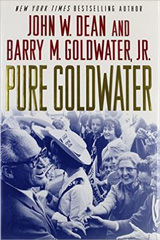
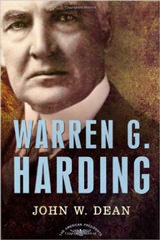
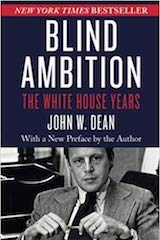
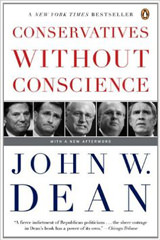
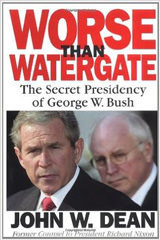
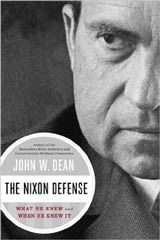
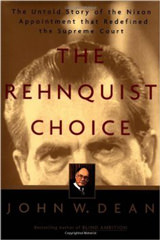

It isn’t going to the supreme court. I think enough lawyers within DoJ are sufficiently embarassed by the underlying economic arguments that this is the tail end of industrial-anti-trust applied to the digital era, where monopolists are common, but fleeting and market power is driven by innovation-led constraints against competition, not pricing or legal contracts …
if you’re going to talk the talk, you’ve got to walk the walk”,Apple! embrace your ideology.
It’s not actually clear the Second Circuit necessarily restrained Bromwich at all. They actually agreed with the DoJ’s interpretation of his duties. Furthermore, their “constraint” was not meaningfully different than the wording of the actual final order from Judge Cote that Bromwich was working under already, which said that he had the authority to investigate whatever documents and talk to anyone at Apple as long as he was doing it in the course of his specified duties…which were basically the same duties the DoJ told the appeals court he has.
When you get right down to it, the appeals court didn’t actually address any of the major complaints Apple told the press about, one way or another. Bear in mind, the only things Bromwich did to set Apple off were request documents and ask to talk to its board and officers. That’s it. Apple never complained about what sorts of questions he asked the people they did allow him to talk to. They were just upset that he had the temerity to, you know, ask to speak to important people.
And the appeals court, again, didn’t say anything about that. Did they come right out and tell Bromwich “Thou shalt not attempt to ‘crawl inside’ Apple to become intimately familiar with its corporate culture”? Nope. All they did was “restrict” Bromwich to doing only those things the final order already limited him to doing anyway, and that he said he was doing all along. It’s right there in Section VI of the document:
http://ia601206.us.archive.org/6/items/gov.uscourts.nysd.394628/gov.uscourts.nysd.394628.374.0.pdf
But even a “restriction” that’s not really a restriction is enough for Apple to claim victory.
And judging by the latest letters and orders to come out of the case, it’s back to business as usual. Apple counselor Theodore Boutrous wrote a letter to Judge Cote saying Apple would provide Bromwich with only those documents Apple had determined were within its interpretation of the appeals court’s interpretation of Bromwich’s mandate. Judge Cote issued another order saying, effectively, “Nuh-uh. You don’t get to make that decision by yourself. If you don’t want to fork over some of what he asked for, take it up with the Magistrate Judge I’ve assigned to mediate disputes between you and him.”
http://www.teleread.com/ebooks/judge-cote-assigns-anti-trust-monitor-mediator-warns-apple-against-withholding-documents/
So, the affair continues, and I guess i need to go get more popcorn.